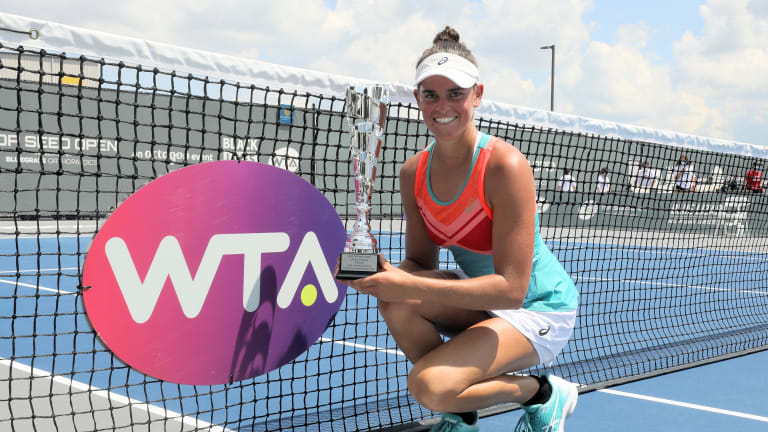Slow & steady: Jennifer Brady's success story finally coming together
By Jan 28, 2021United Cup
United Cup, Day 7 Preview: Can Belgium pull off another upset vs. the Czechs?
By Jan 07, 2026Stat of the Day
Coleman Wong battles into first ATP quarterfinal of career on home soil in Hong Kong
By Jan 07, 2026United Cup
Coco Gauff defeats Maria Sakkari, then wins with Christian Harrison to send U.S. into United Cup semifinals
By Jan 07, 2026United Cup
"I miss those days": Iga Swiatek reflects on underdog career phase
By Jan 07, 2026Style Points
First Look: New Balance goes global with 2026 Australian Open collection
By Jan 06, 2026United Cup
United Cup, Day 6 Preview: Iga Swiatek bids for final berth as group play concludes
By Jan 06, 2026United Cup
Emma Raducanu talks foot injury after 2026 debut at United Cup
By Jan 06, 2026WTA Brisbane, Australia
Aryna Sabalenka dominates Bucsa at Brisbane International, eyes Australian Open
By Jan 06, 2026Brisbane, Australia
Brisbane: Aleksandar Kovacevic sinks Nick Kyrgios in winning debut with coach David Witt
By Jan 06, 2026Slow & steady: Jennifer Brady's success story finally coming together
Featuring equal parts fun and focus, the 25-year-old American has a long list of strengths—but the she also knows her limitations.
Published Jan 28, 2021
Advertising

Slow & steady: Jennifer Brady's success story finally coming together
© Getty Images
Advertising

Slow & steady: Jennifer Brady's success story finally coming together
Advertising

Slow & steady: Jennifer Brady's success story finally coming together
Advertising

Slow & steady: Jennifer Brady's success story finally coming together
© Getty Images
Advertising

Slow & steady: Jennifer Brady's success story finally coming together